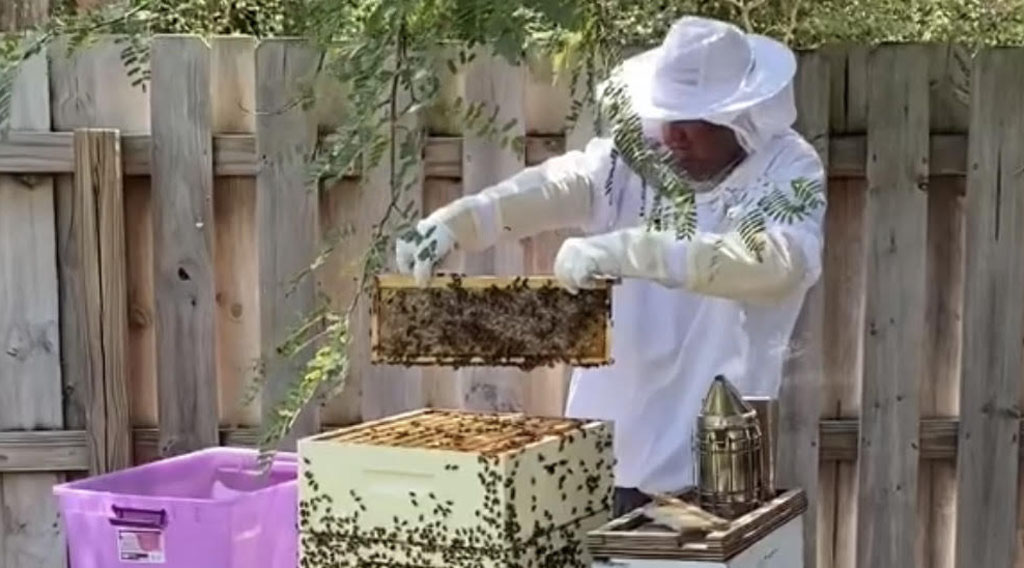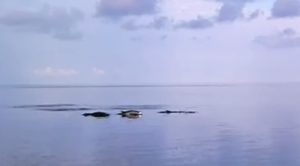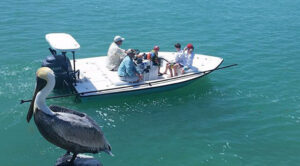Unlike me, my backyard bees are working very hard right now. One upside to not being able to do any fishing charters in Islamorada right now due to the Covid-19 closures is that I am able to spend some time with my backyard bees. Yep, when I’m not fishing, I’m a beekeeper!
As it turns out bee season and tarpon season are the same time of year, which under normal circumstances makes it difficult for me to do a Spring harvest. But not this year!
We named our honey MatecumBEE Honey because our hives are on Upper Matecumbe Key in the heart of Islamorada in an area of the island called Grove Park Estates, that used to be a big key lime grove. I have to say the honey is pretty darn tasty, getting it’s distinctive tropical flavor influences from the nearby wild tamarind, moringa, sweet almond, sea grapes, gumbo limbo, brazilian pepper, jamaican dogwood, red and black mangroves and palm trees.
I’m still rather new to beekeeping and continue to learn alot about the amazing underworld of bees and the important role they play on our planet. I originally became interested in bees to help keep my garden well-pollinated but the more I learned the more I wanted to become an apiarist. I have an animal science degree from the University of Florida but they didn’t cover too much about bees. Fortunately UF has a bee college I hope to attend this Fall!
Did you know that honey bees visit millions of blossoms in their lifetimes (about six to eight weeks)? They travel up to five miles a day making pollination of plants possible and collecting nectar to bring back to the hive. Lucky for us, bees make more honey than their colony needs, allowing us humans to extract and enjoy the many benefits of their excess.
Take a look below at a short video we made showing how the raw honey goes from the hive to the jars. Maybe selling honey will be my Plan BEE 🐝 😀 if I can’t get back to guiding soon!
For more information about my MatecumBEE Honey feel free to contact me.


